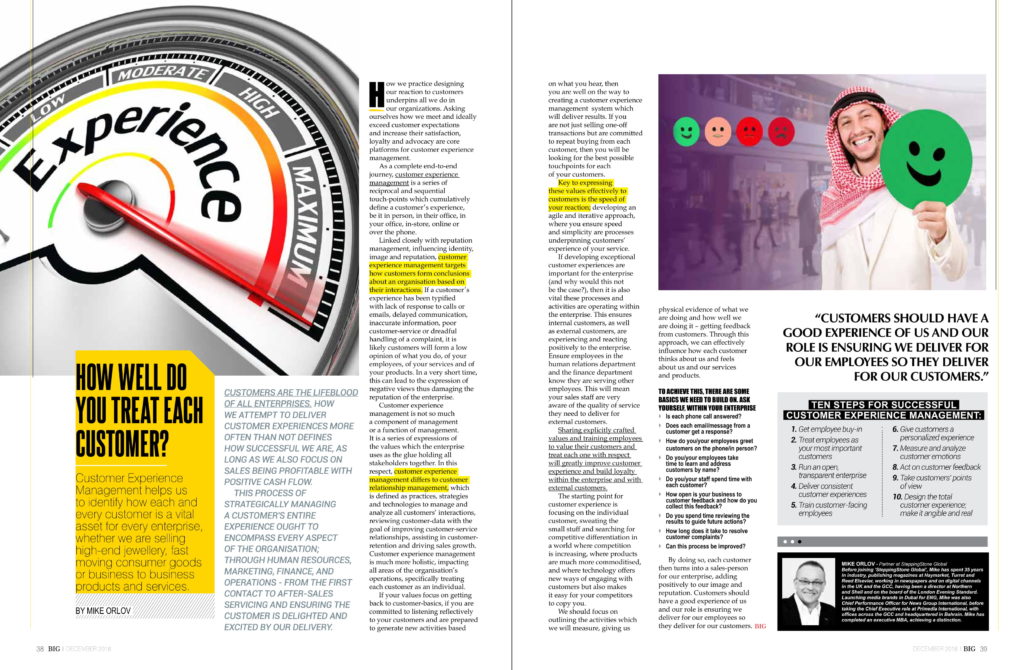
Customers are the lifeblood of all enterprises. How we attempt to deliver customer experiences more often than not defines how successful we are, as long as we also focus on sales being profitable with positive cash flow. This process of strategically managing a customer’s entire experience ought to encompass every aspect of the organisation; through human resources, marketing, finance and operations – from first contact to after-sales servicing and ensuring the customer is delighted and excited by our delivery.
As a complete end-to-end journey, customer experience management is a series of reciprocal and sequential touch-points which cumulatively define a customer’s experience, be it in-person, in their office, in your office, in-store, online or over the phone.
Linked closely with reputation management, influencing identity, image and reputation, customer experience management targets how customers form conclusions about an organisation based on their interactions. If a customer’s experience has been typified with lack of response to calls or emails, delayed communication, inaccurate information, poor customer-service or dreadful handling of a complaint, it is likely customers will form a low opinion of what you do, of your employees, of your services and of your products. In a very short time this can lead to expression of negative views damaging the reputation of the enterprise.
Customer experience management is not so much a component of management, or a function of management. It is a series of expressions of the values which the enterprise uses as the glue holding all stakeholders together. In this respect, customer experience management differs to customer relationship management, which is defined as practices, strategies and technologies to manage and analyse all customers interactions, reviewing customer-data with the goal of improving customer-service relationships, assisting in customer-retention and driving sales growth. Customer experience management is much more holistic, impacting on all areas of the organisation’s operations, specifically treating each customer as an individual.
If your values focus on getting back to customer-basics, if you are committed to listening reflectively to your customers and are prepared to generate new activities based on what you hear, then you are well on the way to creating a customer experience management system which will deliver results. If you are not just selling one-off transactions but are committed to repeat buying from each customer, then you will be looking for the best possible touchpoints for each of your customers.
Key to expressing these values effectively to customers is the speed of your reaction; developing an agile and iterative approach, where you ensure speed and simplicity are processes underpinning customers’ experience of your service.
If developing exceptional customer experiences are important for the enterprise (and why would this not be the case?), then it is also vital these processes and activities are operating within the enterprise. This ensures internal customers as well as external customers are experiencing and reacting positively to the enterprise. Ensure employees in the human relations department and the finance department know they are serving other employees. This will mean your sales staff are very aware of the quality of service they need to deliver for external customers.
Sharing explicitly crafted values and training employees to value their customers and treat each one with respect will greatly improve customer experience and build loyalty within the enterprise and with external customers.
The starting point for customer experience is focusing on the individual customer, sweating the small stuff and searching for competitive differentiation in a world where competition is increasing, where products are much more commoditised, and where technology offers new ways of engaging with customers but also makes it easy for your competitors to copy you.
